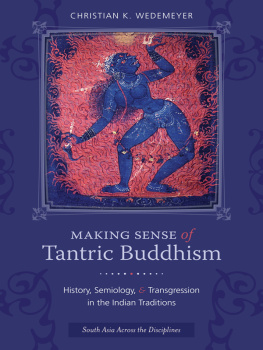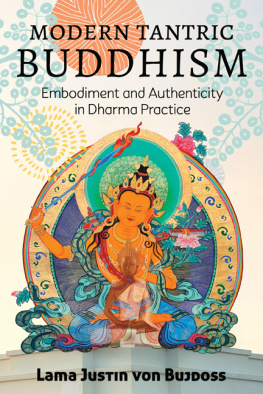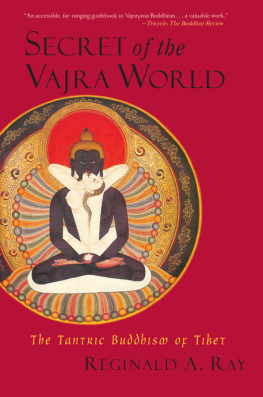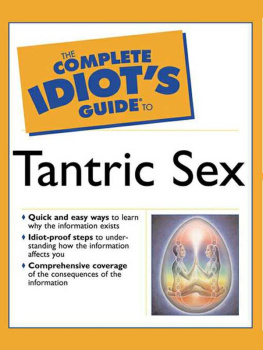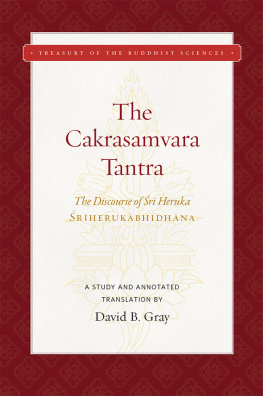MAKING SENSE OF TANTRIC BUDDHISM
SOUTH ASIA ACROSS THE DISCIPLINES
SOUTH ASIA ACROSS THE DISCIPLINES

EDITED BY DIPESH CHAKRABARTY, SHELDON POLLOCK, AND SANJAY SUBRAHMANYAM
Funded by a grant from the Andrew W. Mellon Foundation, and jointly published by the University of California Press, the University of Chicago Press, and Columbia University Press.
Extreme Poetry: The South Asian Movement of Simultaneous Narration by Yigal Bronner (Columbia)
The Social Space of Language: Vernacular Culture in British Colonial Punjab by Farina Mir (California)
Unifying Hinduism: The Philosophy of Vijnanabhiksu in Indian Intellectual History by Andrew J. Nicholson (Columbia)
Everyday Healing: Hindus and Others in an Ambiguously Islamic Place by Carla Bellamy (California)
The Millennial Sovereign: Sacred Kingship and Sainthood in Islam by A. Azfar Moin (Columbia)
South Asia Across the Disciplines is a series devoted to publishing first books across a wide range of South Asian studies, including art, history, philology or textual studies, philosophy, religion, and the interpretive social sciences. Series authors all share the goal of opening up new archives and suggesting new methods and approaches, while demonstrating that South Asian scholarship can be at once deep in expertise and broad in appeal.
MAKING SENSE OF TANTRIC BUDDHISM
HISTORY, SEMIOLOGY, AND TRANSGRESSION IN THE INDIAN TRADITIONS
Christian K. Wedemeyer
COLUMBIA UNIVERSITY PRESS New York
Columbia University Press
Publishers Since 1893
New York Chichester, West Sussex
cup.columbia.edu
Copyright 2013 Columbia University Press
All rights reserved
E-ISBN 978-0-231-53095-8
Library of Congress Cataloging-in-Publication Data
Wedemeyer, Christian K.
Making sense of Tantric Buddhism : history, semiology, and transgression in the Indian traditions / Christian K. Wedemeyer.
pages cm(South Asia across the disciplines)
Includes bibliographical references and index.
ISBN 978-0-231-16240-1 (cloth : alk. paper)ISBN 978-0-231-53095-8 (electronic)
1. Tantric BuddhismIndia. I. Title.
BQ8912.9.I5W43 2013
294.3925dc23
2012006168
A Columbia University Press E-book.
CUP would be pleased to hear about your reading experience with this e-book at .
Cover image: Photographed by John C. and Susan L. Huntington, June 1994. Rajshahi Museum, Rajshahi, Bangladesh. Accession #851
Cover design: Katie Poe
References to Internet Web sites (URLs) were accurate at the time of writing. Neither the author nor Columbia University Press is responsible for URLs that may have expired or changed since the manuscript was prepared.
For
Josie,
who gave so much to so many,
and
Gita,
who waited so patiently for me to write a real book
For the scholar of comparative religions, Tantrism must represent the ultimate challenge.
Michel Strickmann
CONTENTS
T HE INTERPRETATION of Indian Tantric Buddhism presented in this book has developed over many years (ca. 19982010), and I have benefitted enormously from the thinking and assistance of numerous friends, family, and colleagues over this time. Parts of the argument may be traced back to my 1999 doctoral dissertation, when I first began to look more critically at the rhetorics structuring modern accounts of Asian history. Instrumental in shaping my approach to these questions was the inspiration and guidance of Ted Riccardi, who urged me to revisit the work of Hayden White and suggested that I pay close attention to how people write about India. I have endeavored to put that advice into practice here and have also taken a run at how Indians have written about and for themselves.
In many ways, the discussions I had with Ted advanced longstanding questions of method and theory first posed to me by my undergraduate advisor in religion, J. H. Stone II. Although Professor Stone did not actually introduce me to the work of Roland Barthes (that was a fortuitous result of a sale at a New York City bookstore in the early 2000s), he had planted the seed long before. The challenging approach to the study of religions that he exemplified then has impelled me in the decades since to follow up on the many similar pregnant hints he was so good at dropping.
Writing and thinking, in my experience, are highly context-dependent; this book could not have been what it has become were it not for the climate of constant stimulation and challenge offered at the University of Chicago. Colleagues both within and outside the Divinity School have served in general as examples of the very best critical scholarship and have also offered concrete encouragement and criticism as I ventured the various essays that coalesced in this volume. Thanks in particular are due to Wendy Doniger, Matthew Kapstein, and Bruce Lincoln of the History of Religions; Divinity faculty Dan Arnold, Catherine Breckus, Clark Gilpin, Margaret Mitchell, Willemien Otten, Richard Rosengarten, Kathryn Tanner; South Asianists Muzaffar Alam, Yigal Bronner, Steven Collins, Whitney Cox, and Gary Tubb; East Asianists Paul Copp and Jim Ketelaar; and Assyriologist Seth Richardson.
Outside the University of Chicago, I have benefitted immensely from discussions and assistance from many scholars of South Asian religions and civilizations, of whom particular mention should be made: Ashok Aklujkar, Yael Bentor, David Drewes, David Gray, Janet Gyatso, Charlie Hallisey, Shaman Hatley, Roger Jackson, Karen Lang, Rob Linrothe, Dan Martin, Robert Mayer, Poornima Paidipaty, Peter Skilling, Jan-Ulrich Sobisch, Robert Thurman, and Vesna Wallace. Allan D. Megill and Marina Bollinger offered much appreciated help with Paul Veyne. Many others have helped with obtaining the textual resources required for this type of study: Jim Nye, Beth Bidlack, and the staff of the interlibrary loan office at the University of Chicago libraries; the staff of the Newberry Library; and the National Archives of Nepal. The digital Sanskrit manuscript collection of the University of Tokyo has been absolutely invaluable for my work. Leonard van der Kuijp was most generous in sharing with me both his own writings and copies of rare Tibetan historical manuscripts. Various research assistants have been invaluable over the years: Brad Aaron, Erin Burke, Amanda Huffer, Karin Meyers, and Susan Zakin. Likewise, my secretary Judy Lawrence has also been invaluable. Justin Henry was most kind in offering help with the Sinhala Nikayasamgrahawa. Larry Rosansky and Ted Arnold gave very kind feedback on the draft manuscript.
Very special and heartfelt thanks are due to Ronald M. Davidson, who, for almost two decades now, has been a remarkably generous, tolerant, and unfailingly learned interlocutor. Although we continue to disagree on numerous issues of method and interpretation, Ron has shown remarkable goodwill in indulging my compulsion to follow out my intuitions, however contrary they may be to his own. His 2002 Indian Esoteric Buddhism fundamentally reset the standard for scholarly works on Tantric Buddhism, raising the bar rather dramatically. Had it not been for his work, I could barely have conceived of the projects that took shape herein. All scholars working in this field owe him an immense debt of gratitude.

